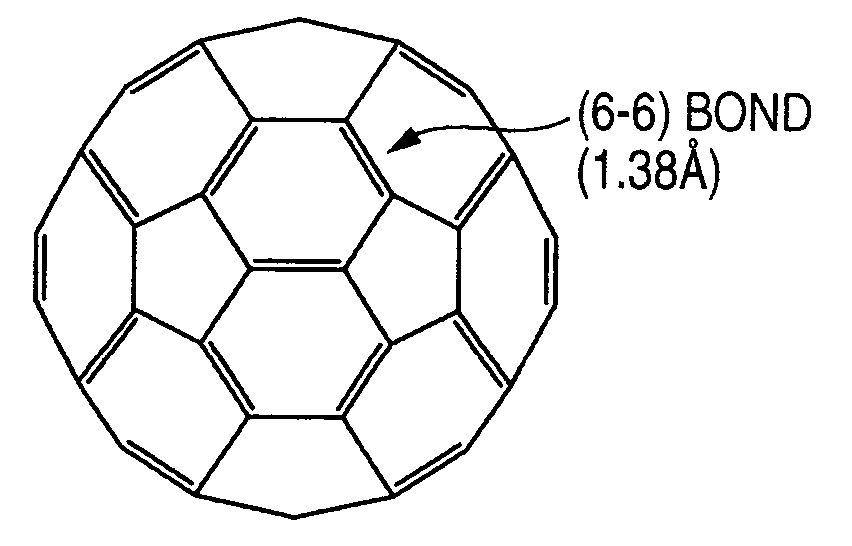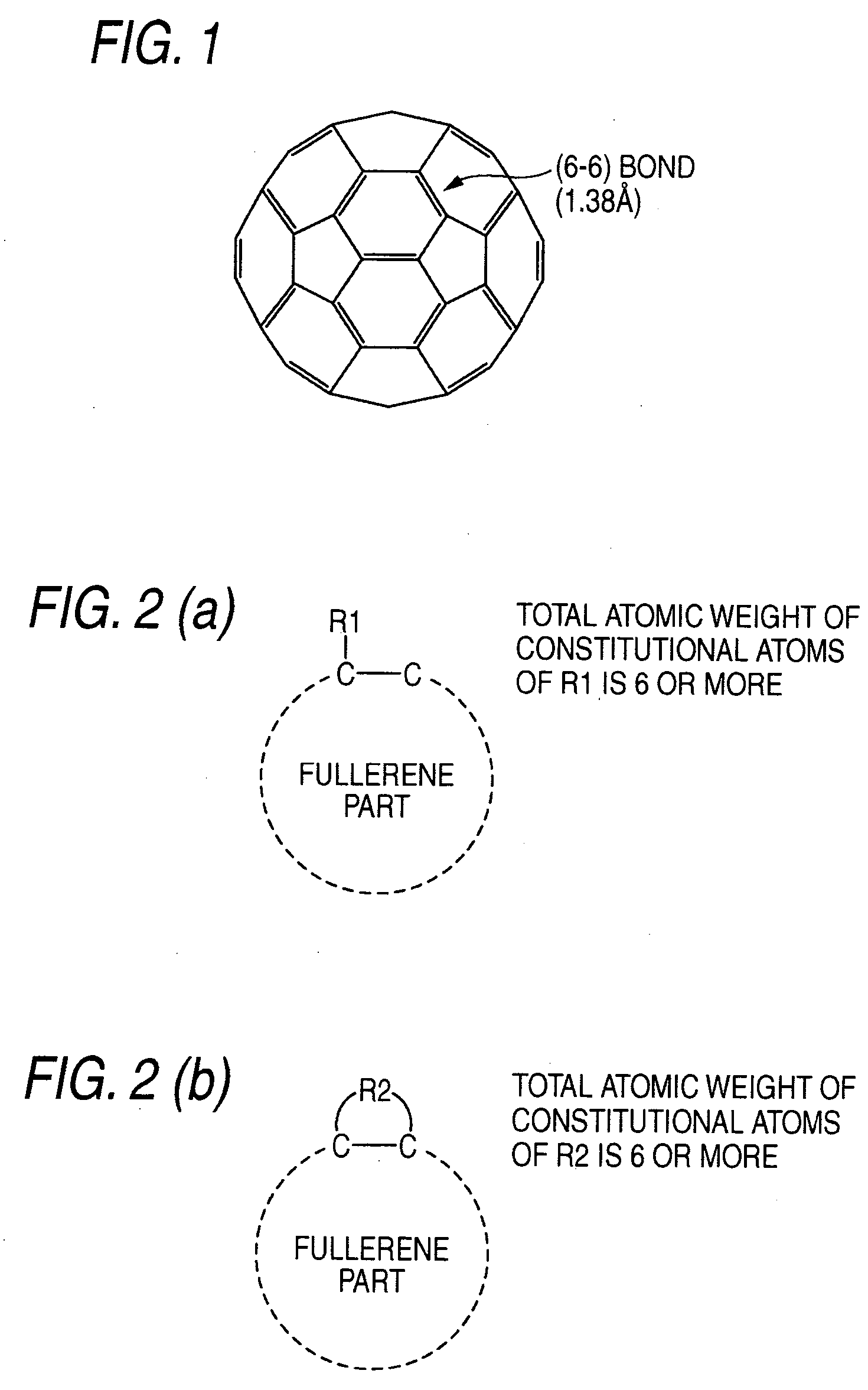Additive for anode material for lithium secondary battery, anode material for lithium secondary battery, anode and lithium secondary battery using the anode material for lithium secondary battery
an anode material and lithium secondary battery technology, applied in the direction of cell components, conductors, electrochemical generators, etc., can solve the problems of increasing the electrical power of these equipments, and achieve the effect of improving the bond strength of the fullerene compound on the surface of the carbonaceous substance, and improving the initial efficiency of charging and discharging a lithium secondary battery
- Summary
- Abstract
- Description
- Claims
- Application Information
AI Technical Summary
Benefits of technology
Problems solved by technology
Method used
Image
Examples
embodiment 1
A-1. Embodiment 1
[0040] The anode material for a lithium secondary battery in this embodiment is an anode material for a lithium secondary battery containing a carbonaceous substance and a fullerene compound, and is characterized in that the fullerene compound is a fullerene compound having a group having a formula weight of 6 or more, and the fullerene compound is present on the surface of the carbonaceous substance. The embodiment will be described in more detail below.
(1) Additive
[0041] In this embodiment, a fullerene derivative having a group having a formula weight of 6 or more is used as an additive for an anode material for a lithium secondary battery. The initial efficiency of the lithium secondary battery can be improved by using the fullerene derivative having a group having a formula weight of 6 or more as an additive for the anode material for a lithium secondary battery. In particular, the initial efficiency of the lithium secondary battery can be improved by making ...
embodiment 3 and embodiment 4
A-2. Embodiment 2, Embodiment 3 and Embodiment 4
[0094] In an anode material for a lithium secondary battery according to the Embodiment 2, a fullerene compound is present on the aforementioned carbonaceous substance, and spherical shell structures of the fullerene compound are crosslinked through at least one atom. In an anode material for a lithium secondary battery according to the Embodiment 3, a fullerene compound is present on the aforementioned carbonaceous substance, and a spherical shell structure of the fullerene compound is chemically bonded to the carbonaceous substance through at least one atom. In the Embodiment 4, the spherical shell structures of the fullerene compound are crosslinked through at least one atom, and the spherical shell structures of the fullerene compound are chemically bonded to the carbonaceous substance through at least one atom.
[0095] As the fullerene compound used in Embodiments 2, 3 and 4, the fullerene and the fullerene derivative described in ...
embodiment 2
(1) Embodiment 2
[0098] The Embodiment 2 has such a state that the spherical shell structures of the fullerene compound are crosslinked through at least one atom to form a fullerene layer. In the Embodiment 2, not only the fullerene compound present on the surface of the carbonaceous substance are aggregated with each other through van der Waals attraction, but also the adjacent spherical shell structures of the fullerene compound are crosslinked through at least one atom, whereby the fullerene layer is improved in strength to provide such an advantage that the fullerene compound is suppressed from being eluted into the electrolyte solution and an organic solvent used upon producing the anode.
[0099] In the Embodiment 2, the carbonaceous substance has, on at least a part of the surface thereof, the fullerene layer containing the fullerene compound.
[0100] One of the characteristic features of the fullerene layer resides in that the spherical shell structures of the fullerene compound...
PUM
| Property | Measurement | Unit |
|---|---|---|
| temperature | aaaaa | aaaaa |
| RH | aaaaa | aaaaa |
| RH | aaaaa | aaaaa |
Abstract
Description
Claims
Application Information
 Login to View More
Login to View More - R&D
- Intellectual Property
- Life Sciences
- Materials
- Tech Scout
- Unparalleled Data Quality
- Higher Quality Content
- 60% Fewer Hallucinations
Browse by: Latest US Patents, China's latest patents, Technical Efficacy Thesaurus, Application Domain, Technology Topic, Popular Technical Reports.
© 2025 PatSnap. All rights reserved.Legal|Privacy policy|Modern Slavery Act Transparency Statement|Sitemap|About US| Contact US: help@patsnap.com



